

 The Bloomsbury Group
The Bloomsbury Group



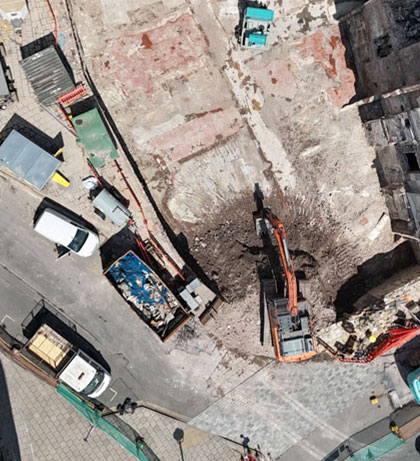



The Bloomsbury Group has been appointed to manage the rebuild and refurbishment of the Grade II* listed Royal Albion Hotel. This prestigious, complex project balances public safety, heritage preservation, and modern hospitality standards while ensuring full compliance with building regulations and heritage. Lewis & Co Planning Consultants and HNW Architects are leading the redesign and heritage-led refurbishment, with ongoing input from key stakeholders. KSD Group, working under The Bloomsbury Group’s management, is delivering demolition and enabling works as an essential stage before restoration and redevelopment can progress.
Standing proudly on Brighton’s seafront since 1826, the Royal Albion is one of the city’s most iconic landmarks. Built by entrepreneur John Colbatch and designed by architect Amon Henry Wilds, it was originally constructed to face the Steine gardens rather than the sea, reflecting Regency fashion. Awarded its “Royal” title in 1847, the hotel grew in reputation and welcomed distinguished guests including Oscar Wilde, Arnold Bennett, and Angela Burdett-Coutts. In February 1894, Wilde stayed in a sea-facing room while working on Poems in Prose, adding to the Albion’s literary heritage.
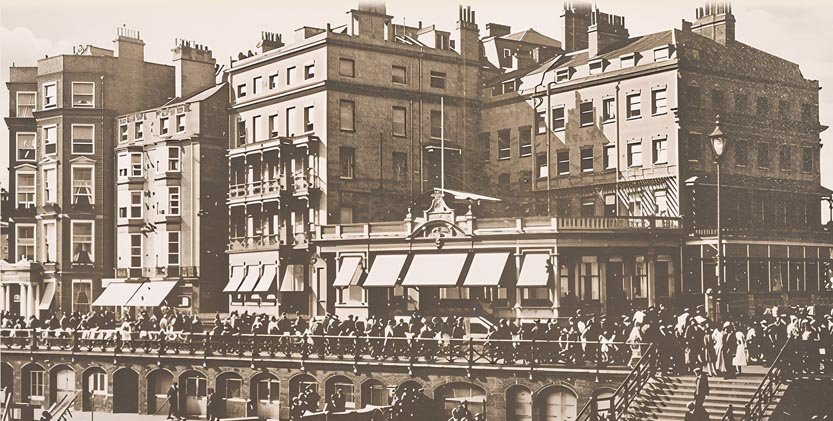
In 1913, hotelier Harry Preston restored the Albion; in 1963 it was joined with neighbouring Lion Mansions. During the 1970s, the adjacent Clive House—once home to Louis Tussaud’s Waxworks—was also incorporated, extending the hotel along the seafront. The building has endured two major fires: a kitchen-ducting fire in 1999 that destroyed the west range, and a second in July 2023 that devastated the western range roof, Clive House and Lion Mansions, which were subsequently demolished.
In 2024, The Bloomsbury Group took charge of the Albion’s future. With planning permissions and designs now underway, a sensitive five-year restoration will transform the site into a new 4-star hotel under the Elite Hotels brand, safeguarding this much-loved landmark for generations. The redevelopment will blend heritage-inspired rooms in historic sections with modern facilities in the newer build, balancing tradition and contemporary comfort on Brighton’s seafront.
Hotel built by John Colbatch, designed by Amon Henry Wilds, originally facing the Steine gardens.
Gains its “Royal” title, becoming Brighton’s leading social and cultural hotel.
Oscar Wilde stays at the Albion while working on Poems in Prose.
Restored by hotelier Harry Preston.
Joined with the neighbouring Lion Mansions.
Clive House, once home to Louis Tussaud’s Waxworks, incorporated into the complex.
Kitchen-ducting fire destroys the west range.
Fire devastates the western range roof, Clive House and Lion Mansions—later demolished.
The Bloomsbury Group leads a five-year restoration and redevelopment into a new 4-star hotel.
In 1999, a kitchen-ducting fire caused major damage to the original west range. On 15 July 2023, a large fire broke out in the western section, destroying the roof, Clive House and Lion Mansions. Following investigations, East Sussex Fire & Rescue Service reported the most likely cause as a discarded cigarette that ignited a decayed timber window frame, spreading through unseen voids and dry structures. Just months earlier, a September 2022 inspection had praised the hotel’s safety measures and staff preparedness, with minor deficiencies noted.
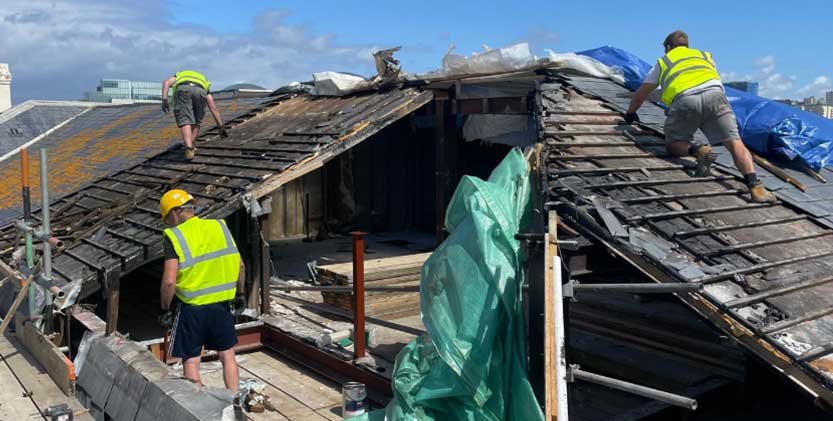
Mould remediation and strip-out works stabilised the structure after the 2023 fire. A major mould outbreak—spreading via ducting and taking hold on carpets, beds, and plasterboard from the 1999 rebuild—was addressed. Over 500 lorry loads of debris were removed. A like-for-like slate and lead roof was installed on the west range. Original fabric predating 1999 (panelling, ceiling fragments, mouldings) was identified and preserved. The restoration seeks to respectfully reinstate period features lost during earlier refurbishments in the 1920s and 1960s.

Initial site works begin. Safety measures allow a partial reopening of the A259 ahead of the Brighton Half Marathon. Early preservation ensured the building remained watertight.
Demolition and clearance progress well ahead of Listed Building Consent submission. Thanks to HNW Architects, Lewis & Co Planning, Archaeology South-East, KSD Group, and Garratt Consultants for their contributions.
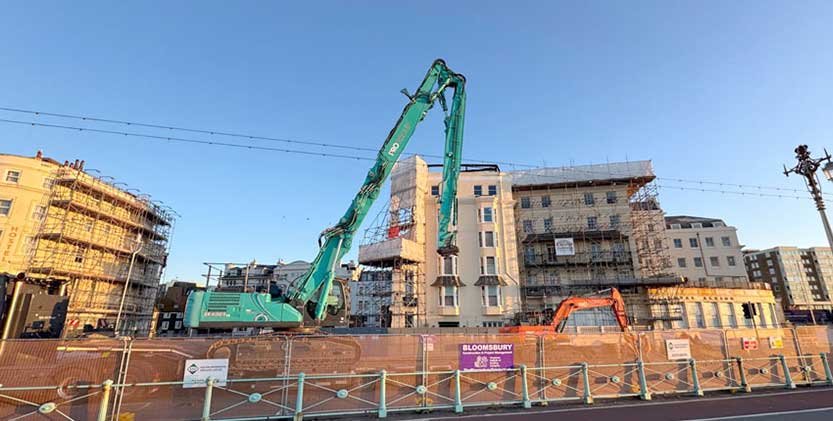
The first demolition machines arrive on site. Urgent works commence to permit reopening of the A259 in time for the Brighton Marathon.
Scaffolding is installed along the frontage. The first planning applications are submitted by HNW Architects and Lewis & Co Planning. Heritage assessments by Archaeology South-East are completed.
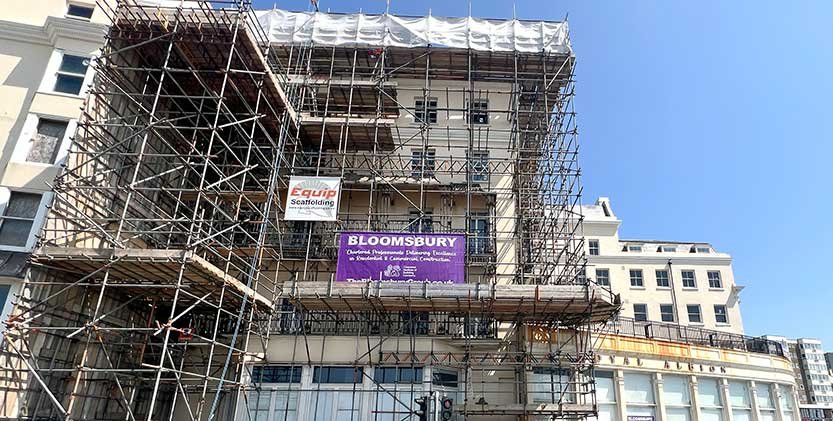
Drone footage showcases progress at the Albion and the wider Old Steine area, highlighting the scheme’s role in regenerating the Valley Gardens corridor.

A detailed heritage report by Archaeology South-East (UCL) traces the Albion’s 200-year development and supports Listed Building Consent applications. Public access may be possible on request.
Phase 2 nears completion. Demolition and asbestos clearance of Lion Mansions are substantially finished. Planning advances for Phase 3 (Clive House demolition), with Phase 4 (Albion refurbishment) due in autumn 2025.
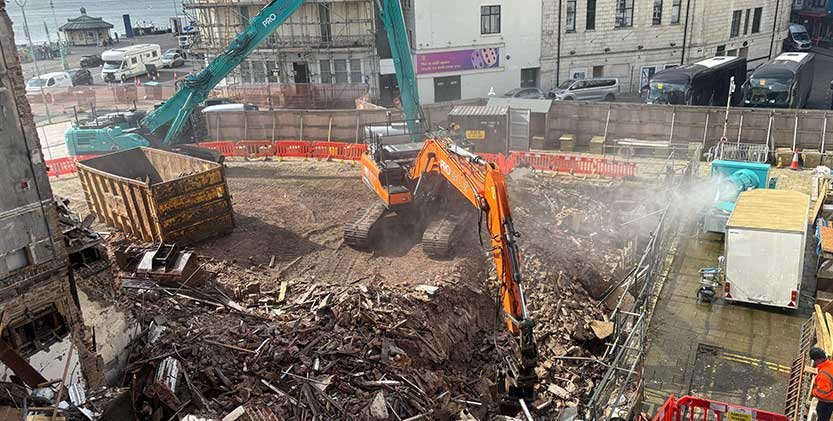
Planning and Listed Building Consent approvals are delayed with Brighton & Hove City Council, so Pool Valley remains closed until Clive House demolition is complete. Additional documentation is being prepared by HNW Architects and Lewis & Co Planning. For safety, one lane of the A259 remains shut as a debris zone, with protective scaffolding walls shielding the adjoining Grade II* Albion.

Backfilling of the former Lion Mansions basement with 6,000 tonnes of Type 1 aggregate begins. This removes safety risks, provides a logistics platform, reduces road-closure costs, and enables interim landscaping until future redevelopment.
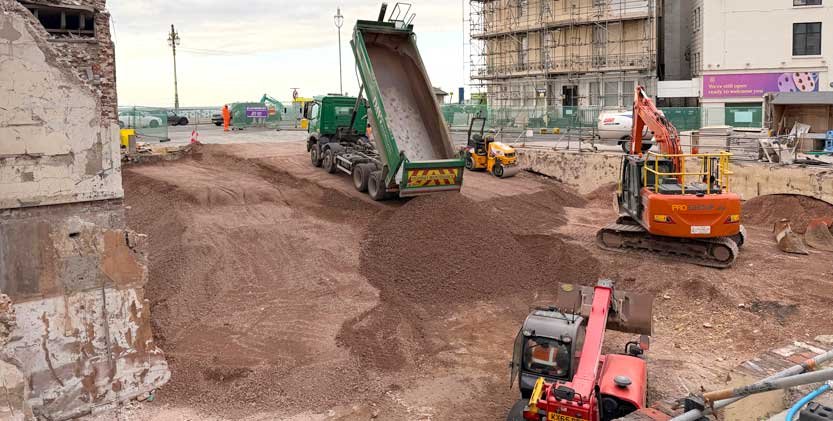
The reconstruction of the Royal Albion Hotel is one of Brighton’s most significant heritage projects. Through careful planning, innovative techniques and collaboration with key partners, The Bloomsbury Group is delivering a 4-star hotel Targeted for a phased opening from 2027 to 2030 —the Royal Albion will again stand as a landmark of the seafront: restored, revitalised and ready for its next 200 years.
View All Services